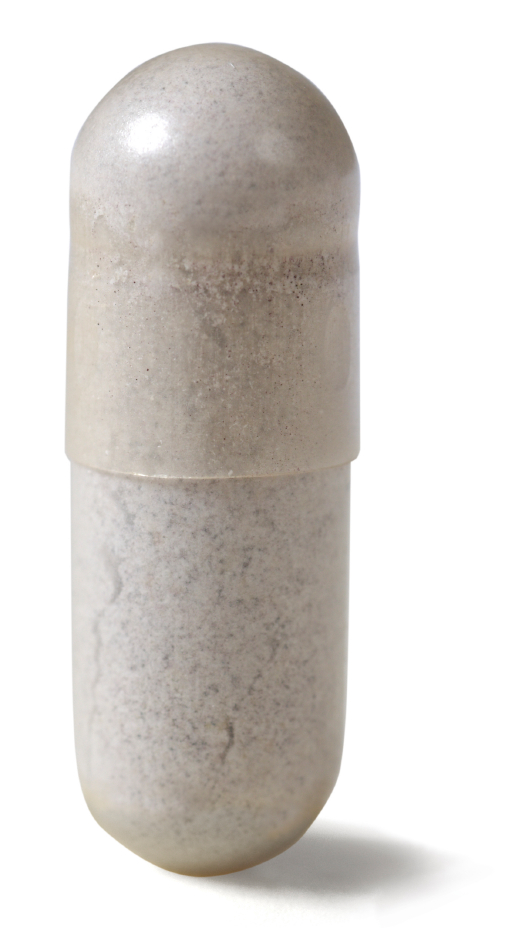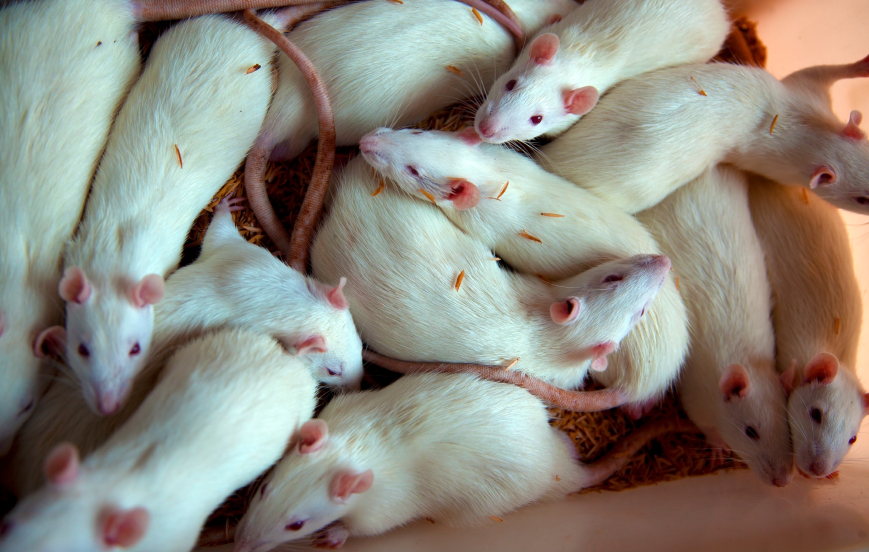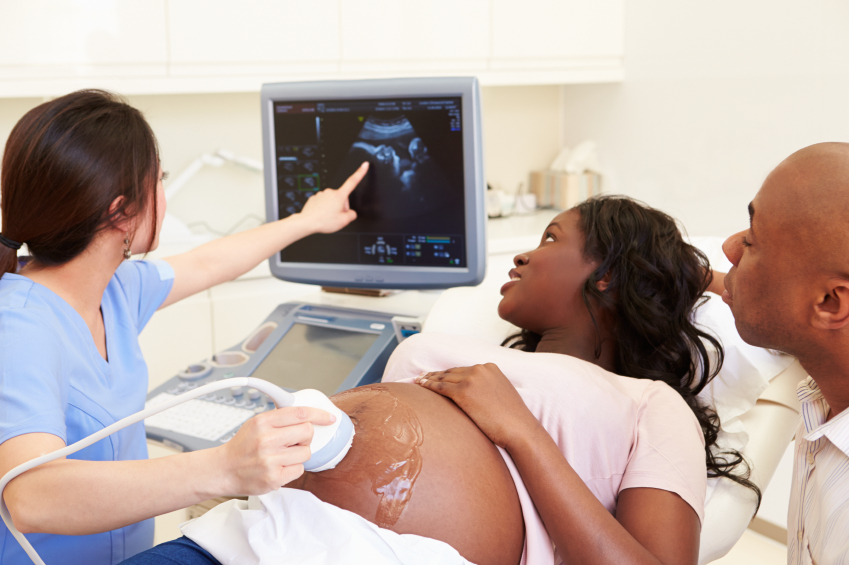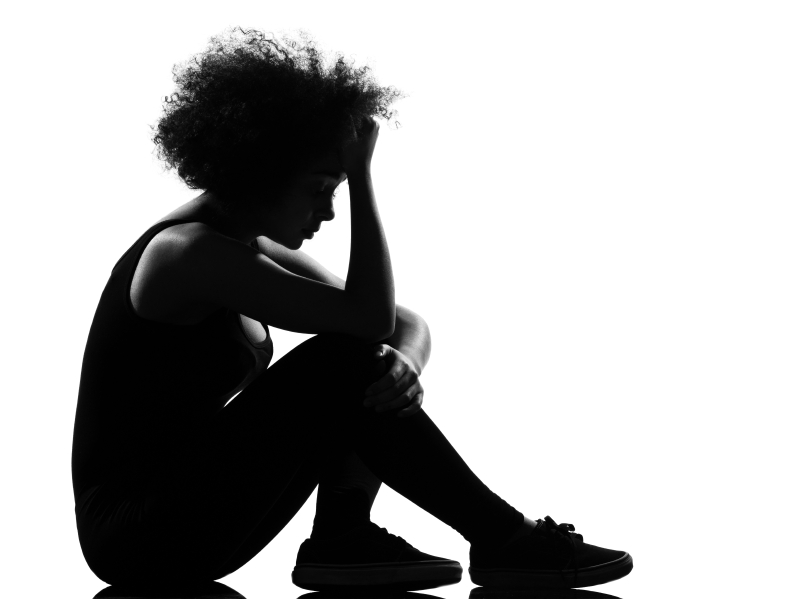Erythropoietin Improves Cognitive Function in Bipolar Depression
 Bipolar disorder is associated with cognitive dysfunction, and no definitive treatment has yet been found to reverse these problems with memory and attention. A new study by Kamilla W. Miskowiak presented at the 2014 meeting of the International Society of Bipolar Disorders explored the use of erythropoietin, a hormone that induces the production of red blood cells, as a treatment for cognitive dysfunction in bipolar disorder.
Bipolar disorder is associated with cognitive dysfunction, and no definitive treatment has yet been found to reverse these problems with memory and attention. A new study by Kamilla W. Miskowiak presented at the 2014 meeting of the International Society of Bipolar Disorders explored the use of erythropoietin, a hormone that induces the production of red blood cells, as a treatment for cognitive dysfunction in bipolar disorder.
Participants in the double-blind study were randomized to receive either eight weekly erythropoietin infusions (40,000 IU) or eight weekly saline infusions. While there was only a trend toward improvement in verbal memory, there were other statistically significant outcomes: erythropoietin improved sustained attention, recognition of happy faces, and speed of complex information processing across learning, attention, and executive function. These outcomes were not related to changes in reaction time or mood, and lasted as long as six weeks after the eighth erythropoietin infusion, by which time red blood cell production had normalized.
International Bipolar Foundation Advocates for Prompt Treatment of Children
 Muffy Walker gave an inspirational talk at the 2014 meeting of the International Society for Bipolar Disorders about the International Bipolar Foundation (IBPF, formerly known as the California Bipolar Foundation) she started with three other mothers of children with bipolar disorder. The organization advocates for better understanding and treatment of the illness in children. Treatment is too often delayed and insufficient, as was the case with Walker’s son, who started having trouble at age four and was diagnosed with post-traumatic stress disorder (PTSD), oppositional defiant disorder (ODD), attention-deficit hyperactivity disorder (ADHD), and conduct disorder (CD) before he became severely manic while taking the antidepressant fluoxetine (Prozac). The foundation has a monthly e-newsletter. Their website is http://ibpf.org.
Muffy Walker gave an inspirational talk at the 2014 meeting of the International Society for Bipolar Disorders about the International Bipolar Foundation (IBPF, formerly known as the California Bipolar Foundation) she started with three other mothers of children with bipolar disorder. The organization advocates for better understanding and treatment of the illness in children. Treatment is too often delayed and insufficient, as was the case with Walker’s son, who started having trouble at age four and was diagnosed with post-traumatic stress disorder (PTSD), oppositional defiant disorder (ODD), attention-deficit hyperactivity disorder (ADHD), and conduct disorder (CD) before he became severely manic while taking the antidepressant fluoxetine (Prozac). The foundation has a monthly e-newsletter. Their website is http://ibpf.org.
Mania-like State Produced in Rats By Kindling the Lateral Hypothalamus
The lateral hypothalamus is responsible for certain physiological functions (the sleep-wake cycle, appetite, energy expenditure, and sexual functions) that are disrupted during mania. At the 2014 meeting of the International Society for Bipolar Disorders, researcher O. Abulseoud et al. presented evidence that a mania-like state could be produced in rats by “kindling” the lateral hypothalamus with an electrode.
The kindled rats engaged in more motor activity; less rest; more sexual self-stimulation; excessive rearing, feeding, and grooming; and more ethanol consumption. Non-kindled rats (and those kindled in other areas such as the nucleus accumbens shell and the infralimbic cortex) did not engage in this combination of behaviors.
To test the similarity between the mania-like behaviors and human mania, the researchers treated the kindled rats with saline solution, lithium, or valproic acid. Lithium and valproic acid reduced these behaviors significantly compared to the saline solution. These treatments also produced long-term increases in mRNA for certain genes (Per1 and CLOCK) that are dysregulated in people with mania.
This animal model may become useful in future research on manic psychopathology in humans.
Newest Meta-Analysis Shows Lithium Is Better than Placebo at Preventing Both Mania and Depression
 A 2004 meta-analysis of previous research showed that lithium was better than placebo at preventing affective episodes and preventing manic episodes. The evidence for the drug’s efficacy in preventing depression was less clear. A new meta-analysis by E. Severus et al. (not yet published) confirms the previous findings and provides new evidence that lithium is also better than placebo at preventing depressions.
A 2004 meta-analysis of previous research showed that lithium was better than placebo at preventing affective episodes and preventing manic episodes. The evidence for the drug’s efficacy in preventing depression was less clear. A new meta-analysis by E. Severus et al. (not yet published) confirms the previous findings and provides new evidence that lithium is also better than placebo at preventing depressions.
The study also suggested that lithium is better than anticonvulsant mood stabilizers at preventing relapse and recurrence, but this finding only reached statistical significance in the prevention of new manic and hypomanic episodes.
Editor’s Note: These findings highlight the desirability of greater lithium use. The drug is currently prescribed less often in the US than it is in Europe. In addition to lithium’s efficacy in the long-term preventative treatment of bipolar disorder, there is evidence that lithium is also the best agent for suicide prevention and for neuroprotective effects.
Oxytocin for Labor Induction Increases Risk of Bipolar Disorder
Over the past several decades, the practice of giving oxytocin (a hormone that facilitates bonding) to pregnant women to induce labor has become more common, but it comes with several risks to the child. These include increased risk of attention deficit hyperactivity disorder (ADHD), autism, and cognitive impairment. A new study by Freedman et al. presented at the 2014 meeting of the International Society for Bipolar Disorders suggests oxytocin may increase the risk of bipolar disorder as well.
In a sample of 19,000 people, there were 94 cases of bipolar disorder, and birth records revealed that an unexpectedly high number of these cases occurred in people whose mothers had received oxytocin to induce labor, regardless of the duration of the pregnancy. Cognition at ages 3 and 5 was impaired on one measure but not another in those children whose mothers received oxytocin. The researchers concluded that maternal oxytocin to induce labor is a significant risk factor for developing bipolar disorder later in life.
Editor’s Note: Oxytocin appears to take its place among other risk factors for bipolar disorder, which include: prematurity, maternal infection, influenza, the bacterial infection toxoplasmosis, higher insolation (a measure of how powerful radiation from the sun is in a given location), childhood adversity, inflammation (as measured by levels of C-reactive protein), heavy marijuana/THC use, and a family history positive for schizophrenia, schizoaffective disorder, or mood disorder, especially bipolar disorder and especially a bilineal history (illness in both parents).
Inflammation Occurs During Both Depression And Mania
There is increasing evidence of a link between mood disorders and inflammation in the body.
At the 2014 meeting of the International Society for Bipolar Disorders, Shang-Ying Tsai discussed increases in measures of inflammation that occur in bipolar disorder as a function of the clinical state of depression, mania, or euthymia (remission). He found that in both mania and depression, there were elevations in various markers of inflammation: STNF-R1, CRP, IL-Ira and SLR-2r. However, SLR-2r showed some particularly interesting results. In mania, elevation of SLR-2r, a marker of cell-mediated inflammation, was state-related, meaning it increased during an episode of mania and remained normal during euthymia. In depression, SLR-2r elevation was trait-related, or persistently elevated (even in remission).
Editor’s Note: This study adds to a growing list of studies that confirm the presence of inflammation in patients with bipolar disorder compared to normal controls, including a 2012 article by Tsai in the Journal of Affective Disorders. How elevations in inflammatory markers in a given individual should direct specific types of treatment intervention remains to be further clarified.
Differentiating Bipolar Disorder and ADHD in Childhood
At the 2014 meeting of the International Society for Bipolar Disorders, researcher B.N. Kim discussed symptoms that could distinguish between bipolar disorder and attention deficit hyperactivity disorder (ADHD) in childhood. Both disorders are characterized by decreased attention, concentration, and frustration tolerance, and increased activity, impulsiveness, and irritability.
Kim shared several differential symptoms that are more indicative of a bipolar diagnosis and that are inconsistent with a simple ADHD diagnosis (and this editor Robert Post has added several more). Signs and symptoms that suggest bipolar disorder and not ADHD include: decreased need for sleep, brief and extended periods of euphoria, hypersexuality, delusions, hallucinations, suicidal or homicidal impulses and/or actions, extreme aggression, and multiple areas of extreme behavioral dyscontrol. ADHD, on the other hand, is characterized by more difficulty focusing attention, and by less extreme symptoms in general.
Specialized Bipolar Treatment Superior to Treatment as Usual: A Randomized Controlled Study
Danish researcher Lars Kessing recently performed the first randomized controlled study of the efficacy of early intervention in bipolar disorder.
Patients who had been hospitalized for a first episode of mania were randomly assigned to two years of treatment in a specialized clinic versus two years with treatment as usual in the community (the control condition). The researchers predicted that then specialized clinic would decrease subsequent hospitalizations, and increase adherence to medication and patient satisfaction compared to treatment as usual over the subsequent six years.
Treatment at the special clinic began with a phase of post-hospitalization settling in, followed by psychoeducation (15 weeks of 1 session/week). Emphasis was placed on the recognition of breakthrough symptoms—early warning signals of an impending mood episode.
All three outcomes were better in the group who were treated at the specialized clinic than in control group who received treatment as usual. Hospitalizations were reduced 40%, medication compliance was enhanced, and patients were more satisfied. Patients younger than age 36 showed greater improvement and greater differences from the control group than were seen among older patients.
One striking observation was that the difference observed after patients had spent two years in the specialized clinic compared to the control group persisted and grew over the following four years, even though these patients left the specialized clinic after the first two years.
The specialized clinic was not only successful, but was also cost-effective. Clinic patient care led to a savings of €3,194 per patient. The costs for clinic patients were 11% of those for control patients.
Editor’s Note: We already know that treatment delay is related to poor outcome. (See article by this editor Robert Post et al. in the Journal of Clinical Psychiatry in 2010.) This study is groundbreaking in demonstrating that the quality of care in a specialized clinic has enormous personal, societal, and financial benefits, and can render the course of illness more benign over a sustained period of at least 6 years.
This means that a revolution in the care and treatment of patients with bipolar disorder is needed throughout the world, but especially in the US, where the typical treatment paradigm is as bad or worse than the treatment as usual condition in Kessing’s Danish study. When patients are discharged from the hospital, they are immediately at increased risk for relapses and, most alarmingly, at 200-fold increased risk of suicide. This post-hospitalization gap in treatment between episodes needs to be better managed. Transitional care is rarely handled well, psychoeducation is rarely given for a sufficient duration, therapy is often unavailable, and medication non-compliance is high. These factors lead to increased illness, re-hospitalizations, and skyrocketing personal and societal costs. Moreover, only 20% of bipolar patients identified in epidemiological studies in the US are in any kind of treatment.
Treatment guidelines must be changed to better address these issues. A first episode of mania should trigger a cascade of sequential treatments: Read more
Methylene Blue Treats Bipolar Depression in Adults
Methylene blue is a chemical compound that has been used to treat a variety of medical conditions. This drug has some actions that resemble lithium’s: it inhibits guanylate cyclase, which generates second messenger cyclic GMP, and decreases nitric oxide. New evidence shows it may help depression and anxiety in bipolar disorder when added to lamotrigine.
In patients with bipolar disorder who were all treated with lamotrigine, an active 65mg dose of methylene blue three times per day (for a daily total of 195mg) versus 15mg/day (an inactive dose that produces the same side effect of blue urine) was more effective at treating depression and anxiety in a 12-week crossover study. Side effects, in addition to blue urine, included infrequent nausea, diarrhea, headache, and a burning sensation in the urinary tract. Of the 37 randomized study participants, 27 completed both phases of the entire six-month study. Martin Alda, a researcher who presented the double-blind randomized crossover data at the 2014 meeting of the International Society for Bipolar Disorders, indicated that he has also used this preparation clinically with success, although the pharmacy staff who prepared the capsules were not too happy, because everything the drug touches turns blue.
Children of Bipolar Parents Are At Risk for Depression and Bipolar Disorder
The Pittsburgh Bipolar Offspring study, led by Boris Birmaher of the University of Pittsburgh, investigated risk of illness in the offspring of parents with bipolar disorder. The study included 233 parents with bipolar disorder and 143 controls. In addition to bipolar disorder, parents in the study had many other disorders, including anxiety (70%), panic (40%), a disruptive behavior disorder (35%), attention-deficit hyperactivity disorder or ADHD (25%), and substance use disorder (35%).
The offspring averaged age 12 at entry in the study. Offspring of parents with bipolar disorder had more illness than those of control parents, including bipolar spectrum disorders (10.6% versus 0.8%), depression (10.6% versus 3.6%), anxiety disorder (25.8% versus 10.8%), oppositional defiant disorder or conduct disorder (19.1% versus 8.0%), and ADHD (24.5% versus 6.7%). Of these differences, only bipolar spectrum disorders and anxiety were statistically significant after correcting for differences in the parents’ other diagnoses.
Two factors predicted bipolar spectrum disorders in the offspring: younger age of a parent at birth of child and bipolar disorder in both parents. Older children and those with diagnoses of anxiety or oppositional defiant disorder were more likely to be diagnosed with bipolar disorder.
On long-term follow-up that continued on average until the offspring reached age 20, 23% of those participants who had a parent with bipolar disorder developed any type of bipolar disorder, versus only 1.2% of the children of controls. Of these 23%, about two-thirds had a depressive episode prior to the onset of their bipolar disorder.
Of the offspring of parents with bipolar disorder who developed a bipolar spectrum illness, 12.3% developed bipolar I or II disorders, while 10.7% were diagnosed with bipolar not otherwise specified (NOS). Of those with bipolar NOS, which some consider to be sub-threshold bipolar disorder, about 45% converted to a bipolar I or II diagnosis after several years of prospective follow-up. These data, along with the finding that children with bipolar NOS are highly impaired and take more than a year on average to remit, stress the importance of vigorously treating this subtype, even if it does not meet the full threshold for bipolar I or bipolar II.
Birmaher indicated that although about 50% of the offspring of a bipolar patient had no diagnosis, the high incidence of multiple psychiatric difficulties developing over childhood and adolescence spoke to the importance of attempts at early intervention and prevention. Studies of effective treatment and prevention strategies are desperately needed. So far only family focused therapy (FFT), an intervention developed by researcher David Miklowitz, has shown significant benefits over standard treatment in children with a positive family history of bipolar disorder who already have a diagnosis of anxiety, depression, or bipolar not otherwise specified.








